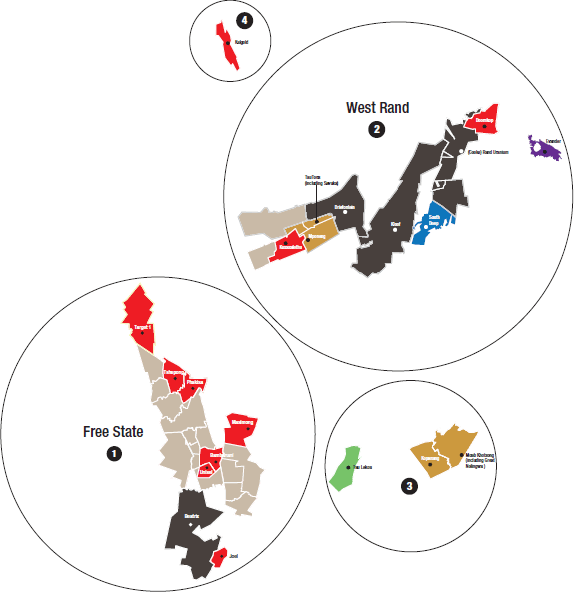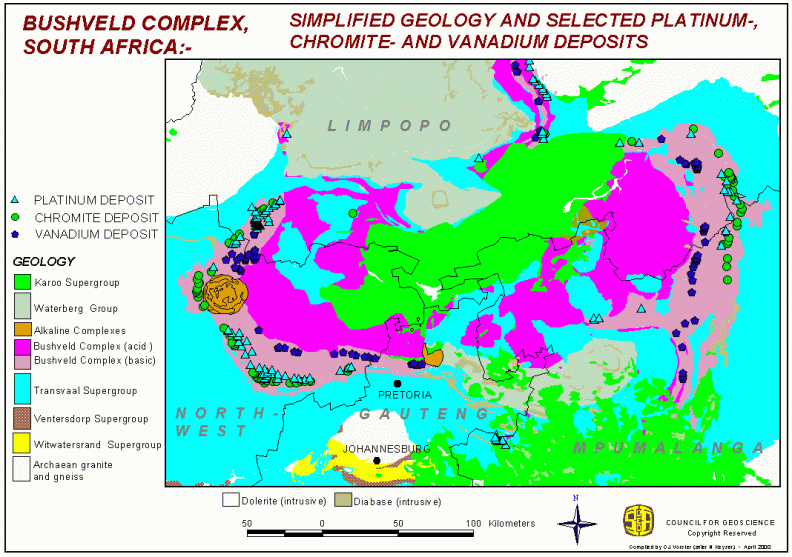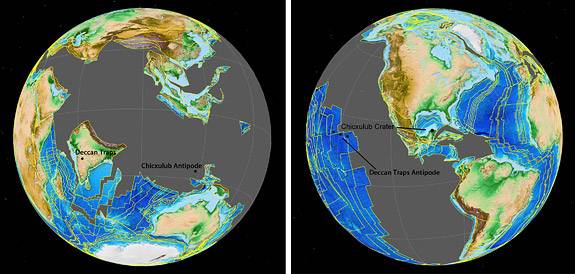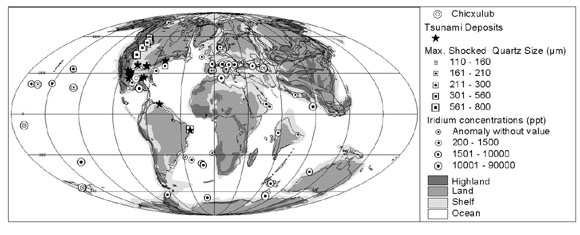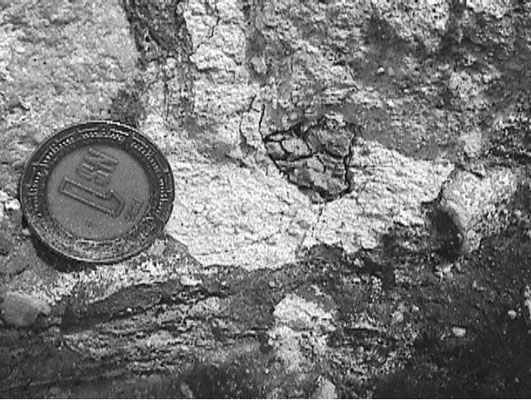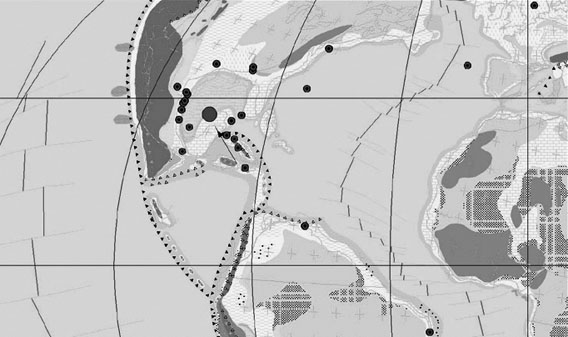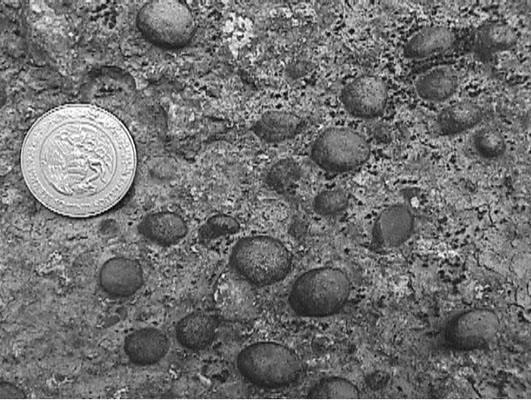Post by 1dave on May 25, 2018 9:40:32 GMT -5
Two Billion Years Ago a huge Comet slammed into southeastern Africa, creating the Bushveld/Vredefort Complex. In spite of obviously being impact craters, most geologists still cling to their mentors from before Gene Shoemaker's decisive revelations in the 1960's.

When first discovered back in the 1800's when all reasonable scientists knew "rocks do not fall from the sky," they had to come up with some explanation. Seriously outdated, devotees still make spurious arguments:
www.sciencedirect.com/science/article/pii/S0012821X97002161
W. E. Elston, Department of Earth and Planetary Sciences, MSC03 2040, University of New Mexico, Dared to set them straight.
www.lpi.usra.edu/meetings/lmi2008/pdf/3015.pdf

When first discovered back in the 1800's when all reasonable scientists knew "rocks do not fall from the sky," they had to come up with some explanation. Seriously outdated, devotees still make spurious arguments:
www.sciencedirect.com/science/article/pii/S0012821X97002161
Abstract
It has been suggested that the Bushveld Complex of South Africa could be the result of multiple large meteorite or comet impacts. According to this hypothesis, part of the lower Rooiberg Group, which forms the roof of the Complex, represents a sheet of impact melt breccia and other impact breccias. The present study is an attempt to test the viability of the impact hypothesis for the Bushveld Complex by interpreting newly acquired field, geochemical, petrographic, and textural data for Rooiberg Group and associated rocks.
Extensive field work throughout the Rooiberg Group and, particularly, at the contact between this unit and the underlying Pretoria Group metasediments has failed to identify any material that could be interpreted as impact-related.
The Rooiberg Group is predominantly composed of individual volcanic flows and pyroclastic units representing several geochemically distinct magma types. These volcanic units are interbedded with thin, laterally extensive, sedimentary units, a few of which are sedimentary breccias. The presence of needles of quartz that may represent paramorphs after tridymite in some Rooiberg Group units has been used as evidence to support the contention that these rocks represent superheated impact melt. However, quartz paramorphs after tridymite have been recognized in terrestrial volcanic provinces (e.g., the North Shore Volcanic Group in northeastern Minnesota). Structural data, including dips of Rooiberg Group strata, suggest that the lobate shape of the Complex, which resembles several closely-spaced ring features, is the result of post-Rooiberg Group deformation. Microdeformation features in quartz from Bushveld-related rocks do not satisfy the criteria of shock metamorphic planar deformation features (PDFs) which would be characteristic of impact-induced shock pressures between ∼10 and ∼30 GPa. These data, especially the absence of macroscopic and microscopic evidence of shock deformation in pre-Bushveld rocks, are inconsistent with formation of the Bushveld Complex by impact.
Acknowledgments:
This study would have been impossible without generous (if skeptical) field guides (David Twist, Jochen Schweitzer, Frik Hartzer) and field assistants (E. G. Deal, M. Caress, J. M. de Moor, T. Manyeruke), and support by the University of Pretoria (Professors von Gruenewaldt, De Waal, Eriksson). My sincere thanks to them all!
It has been suggested that the Bushveld Complex of South Africa could be the result of multiple large meteorite or comet impacts. According to this hypothesis, part of the lower Rooiberg Group, which forms the roof of the Complex, represents a sheet of impact melt breccia and other impact breccias. The present study is an attempt to test the viability of the impact hypothesis for the Bushveld Complex by interpreting newly acquired field, geochemical, petrographic, and textural data for Rooiberg Group and associated rocks.
Extensive field work throughout the Rooiberg Group and, particularly, at the contact between this unit and the underlying Pretoria Group metasediments has failed to identify any material that could be interpreted as impact-related.
The Rooiberg Group is predominantly composed of individual volcanic flows and pyroclastic units representing several geochemically distinct magma types. These volcanic units are interbedded with thin, laterally extensive, sedimentary units, a few of which are sedimentary breccias. The presence of needles of quartz that may represent paramorphs after tridymite in some Rooiberg Group units has been used as evidence to support the contention that these rocks represent superheated impact melt. However, quartz paramorphs after tridymite have been recognized in terrestrial volcanic provinces (e.g., the North Shore Volcanic Group in northeastern Minnesota). Structural data, including dips of Rooiberg Group strata, suggest that the lobate shape of the Complex, which resembles several closely-spaced ring features, is the result of post-Rooiberg Group deformation. Microdeformation features in quartz from Bushveld-related rocks do not satisfy the criteria of shock metamorphic planar deformation features (PDFs) which would be characteristic of impact-induced shock pressures between ∼10 and ∼30 GPa. These data, especially the absence of macroscopic and microscopic evidence of shock deformation in pre-Bushveld rocks, are inconsistent with formation of the Bushveld Complex by impact.
Acknowledgments:
This study would have been impossible without generous (if skeptical) field guides (David Twist, Jochen Schweitzer, Frik Hartzer) and field assistants (E. G. Deal, M. Caress, J. M. de Moor, T. Manyeruke), and support by the University of Pretoria (Professors von Gruenewaldt, De Waal, Eriksson). My sincere thanks to them all!
W. E. Elston, Department of Earth and Planetary Sciences, MSC03 2040, University of New Mexico, Dared to set them straight.
www.lpi.usra.edu/meetings/lmi2008/pdf/3015.pdf
Unique Bushveld Rocks:
The unique Bushveld is the largest continental igneous complex and in a class by itself
among proposed terrestrial impact structures.
Each component (~85% endogenic) is the largest known of its kind (Vt =106 km3): mafic cumulates (Rustenburg Layered Suite), A-type Lebowa Granite Suite, multi-origin Rashoop Granophyre, and the Rooiberg Group of unique high-T pseudovolcanic meltrocks with major sedimentary components [1], commonly misinterpreted as felsite or “classical example” of rhyolite [2]. Rooiberg rocks share some characteristics with the Onaping Fm. (Sudbury) but rarely preserve shock features in an environment dominated by heat. They span the entire history of the Bushveld Complex [3] and record its proposed stages: impact, mantle upwelling (or plume [3]) with melting in mantle and crust, quiescence interrupted by catastrophic caldera-like collapse, and the beginning of a >100 m.y. period of adjustment.
Impact:
A catastrophe at ~2.06 Ga, interpreted as a cluster of quasi-simultaneous impacts, abruptly ended epicontinental sedimentation (Pretoria Group, Transvaal Supergroup). A multiring [4] four-lobed transient crater (or overlapping crater cluster) was modified by collapse of its central uplift(s) and peak ring. The Rooiberg Group began to accumulate in the first outer ring (eventual depth 4-5 km [2]) from repeated overflows of a superheated Sudbury-type melt-pool [5].
The unique Bushveld is the largest continental igneous complex and in a class by itself
among proposed terrestrial impact structures.
Each component (~85% endogenic) is the largest known of its kind (Vt =106 km3): mafic cumulates (Rustenburg Layered Suite), A-type Lebowa Granite Suite, multi-origin Rashoop Granophyre, and the Rooiberg Group of unique high-T pseudovolcanic meltrocks with major sedimentary components [1], commonly misinterpreted as felsite or “classical example” of rhyolite [2]. Rooiberg rocks share some characteristics with the Onaping Fm. (Sudbury) but rarely preserve shock features in an environment dominated by heat. They span the entire history of the Bushveld Complex [3] and record its proposed stages: impact, mantle upwelling (or plume [3]) with melting in mantle and crust, quiescence interrupted by catastrophic caldera-like collapse, and the beginning of a >100 m.y. period of adjustment.
Impact:
A catastrophe at ~2.06 Ga, interpreted as a cluster of quasi-simultaneous impacts, abruptly ended epicontinental sedimentation (Pretoria Group, Transvaal Supergroup). A multiring [4] four-lobed transient crater (or overlapping crater cluster) was modified by collapse of its central uplift(s) and peak ring. The Rooiberg Group began to accumulate in the first outer ring (eventual depth 4-5 km [2]) from repeated overflows of a superheated Sudbury-type melt-pool [5].



